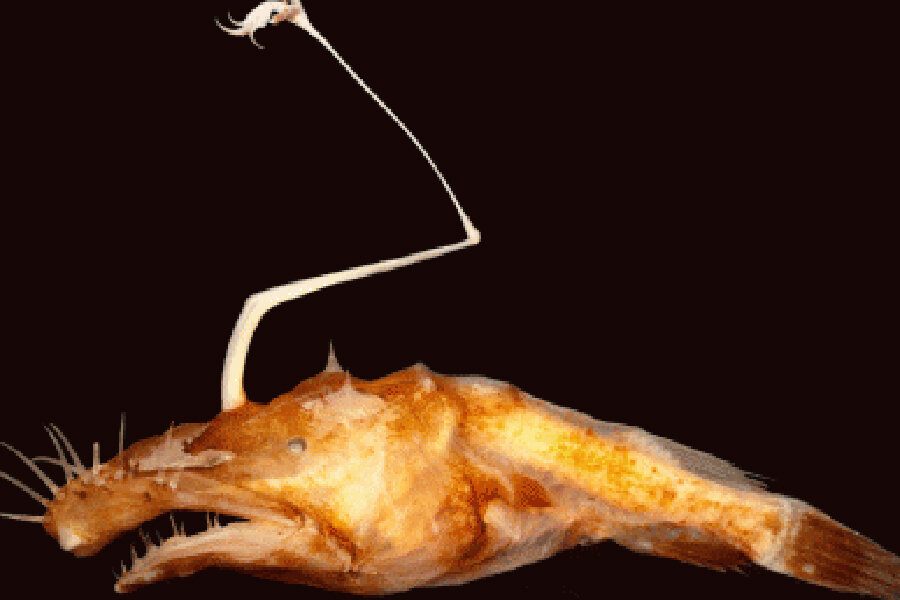A new fish species is lighting up the ocean’s ‘midnight zone’
Loading...
The discovery of a new species of anglerfish in the Gulf of Mexico is getting scientists excited about what else lies in its habitat: an area of the deep sea known as the ‘midnight zone.’
Scientists from Florida’s Nova Southeastern University found the new creatures – a species called ceratioid anglerfish – in the northern part of the gulf, around 1,300 meters below the surface.
All three of the specimens they found were female, ranging in size from one to three and a half inches long.
That area, also known as the bathyal zone, is so-called because waters at that depth appear pitch-black, reports CNN. Bioluminescent creatures, like the ceratioid anglerfish, usually serve as the only source of light.
Most of this region is still a mystery to humans, thanks to the extreme conditions and water pressure levels of more than 2,200 pounds per square inch. Less than 2 percent of the ocean floor has been explored, and an even smaller proportion – less than 0.05 percent – has been mapped to provide any useful detail, according to Scientific American.
“Every time we go out on a deep-sea research excursion there’s a good chance we’ll see something we’ve never seen before – the life at these depths is really amazing,” said Dr. Tracey Sutton, an NSU oceanographer who helped report the findings.
As with other deep-sea discoveries, the newly scouted anglerfish has been described as a nightmarish, creepy “weirdo.”
“Upon seeing the fearsome-looking creature, which sports spikes, sharp teeth and a pole-like appendage sprouting from the top of its head, some people may feel like the new species should never have seen the light of day,” reported The Atlanta Journal-Constitution.
Just as previously discovered species do, the ceratioid anglerfish uses its glow-in-the-dark capabilities to attract its prey. But this species has a fairly different appearance from its counterparts, “which are usually stout and roundish,” reports CNN.
Food in the midnight zone is hard to come by, so the anglerfish’s appendage also looks and acts like “a fishing pole of sorts,” said a statement from researchers. “Like its human counterparts, this fish dangles the appendage until an unsuspecting fish swims up thinking they found a meal, only to quickly learn that they are, in fact, a meal themselves.”
The specimens found are being brought to reside at the University of Washington, which houses the world’s largest deep-sea anglerfish collection.
“As a researcher, the one thing I know is that there's so much more we can learn about our oceans,” said Dr. Sutton. “Finding this new species reinforces the notion that our inventory of life in the vast ocean interior is far from complete.”








